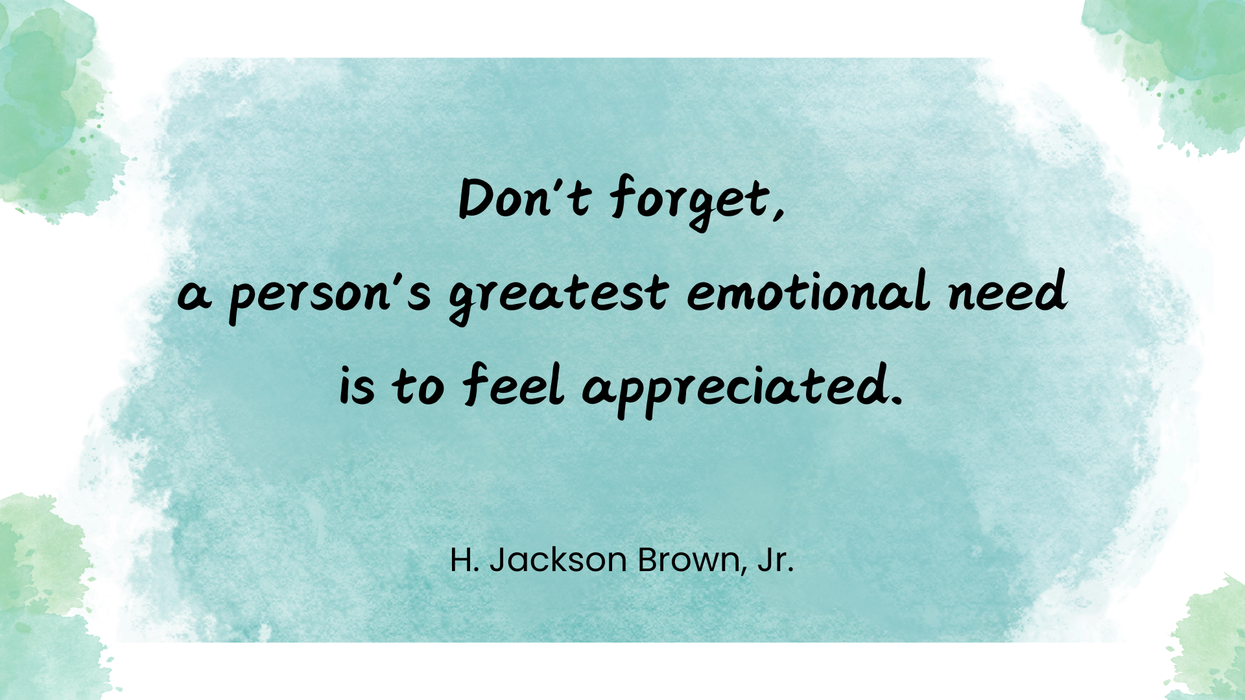
Are you a prime candidate for a mid-level or senior-level leadership role? If so, you have to shake up the way you tailor your resume for that position.
The way recruiters and hiring managers look for leadership candidates is a bit different than the way they search for candidates in other roles. Theyâre not just looking for technical skills. They want to see evidence of your ability to inspire teams, drive results, and lead through challenges.
Your resume needs to tell a compelling story about your leadership journey, showcasing both your achievements and the impact youâve made on organizations. Before you apply for that leadership position, make sure you leverage these seven strategies to tailor your resume for maximum impact.
1. Revamp Your Resume’s Keywords
As you may know, the computer databases, or applicant tracking systems, that store and analyze incoming resumes for job board, employer, and recruiter sites count the number of times certain words are used in your resume. These keywords are industry-specific and unique to each role in each company. Your resume ranks higher if you include more of these words in the document.
- Include a keyword section in your summary and stock it with 12 to 15 keywords pulled from the job description of the role you are pursuing.
- More importantly, use these keywords in each relevant job listing you include in your document. They can be easily woven into sentences in your position overview statements, as well as your achievements.
- If you’re a new grad, have recently attained an MBA, or don’t have all of the experience sought in the job posting you’re applying for, try listing relevant coursework in your resume’s education section. This will boost your keyword count.
- Fairly universal keywords include terms such as strategic planning, operations leadership, business management, cross-functional, cross-cultural, global, talent management, organizational restructuring, and P&L accountability.
2. Reposition Your Resume’s Summary

Each time you apply for a new role, you need to tweak your summary to highlight the right skills and keywords relevant to the position. You also need to emphasize the right capabilities.
When you apply for a leadership role, it is imperative to showcase your skills and experience with strategy creation. In lower-level jobs, you have to demonstrate your tactical execution strengths; in director-level plus positions, designing and implementing strategic plans is absolutely critical.
Instead of writing a typical summary on your resume, change your top fold to an experience summary, which is a list of 6-8 hard or transferable skills needed for the specific job you’re applying for.
Here are some tips to make your experience summary stand out for a leadership position:
- Tailor your skills: Identify the most critical skills for the leadership role youâre targeting by studying the job description and aligning your experience to those requirements.
- Use industry-specific keywords: Incorporate terms commonly associated with leadership in your field, such as “organizational transformation,” “team development,” or “market expansion.”
- Keep it concise: Each skill or experience point should be clear, impactful, and tailored to the role, avoiding unnecessary detail.
A well-crafted experience summary gives hiring managers an immediate sense of your suitability for a leadership position and ensures you stand out as a candidate.
3. Clarify The Context Of Each Position, Promotion, Or Achievement

One of a resume’s key tasks is to tell the story of your career. Yours must convey the importance and relevance of each position change you’ve made while simultaneously clarifying the key challenges you faced in the role.
- Include a brief position overview or introduction to each role on your resume. If the position was a promotion or special assignment, make that clear.
- Showcase the context of your hire or promotion. Were you the first salesperson in a new territory, or the newest manager in a series of five within a short time frame? Were you hired or promoted with specific challenges in mind? Were you hired or promoted based on specific skills or experience you possessed?
- If you were placed in the role to resolve specific challenges, it’s vital to note the circumstances of your entry into the position. For example, if you were hired to turn around declining sales, what was the sales level when you started? What sales level or position did you attain during your tenure?
- Keep it brief. Your position introduction should take up only two to three lines of text. Make every word count!
- Do the same thing with your achievements by including key details that reveal the larger context of your actions. If you averted a division closure by turning around sales, that’s vital to highlight. If your marketing efforts helped open new market sectors that paved the way for a mission-critical merger, say so. Use numbers to quantify these achievements. Don’t just focus on results; put your results in a larger context that makes your overall contributions more clear.
4. Front-Load Your Resumeâs Achievements With A Strategic Focus

Most job seekers assume that recruiters read resumes the same way that they do. However, that’s not the case.
Many recruiters read a resume “out of order” (aka in pieces and parts) to see the big picture of the prospective candidate’s career. This often includes reading achievement statements differently than you do.
Before reading them in their entirety, some recruiters briefly review the first few words of each bulleted statement to test the waters, so to speak. They also do this to see if the accomplishments are more tactically or strategically focused. It’s imperative that you front-load your achievements with the strategic focus they’re looking for, assuming you have that experience.
- In leadership positions, your strategy influence is often a bigger deal than your monetary impact. Begin your bulleted statements by clarifying your strategic impact, then note the specific impacts you achieved.
- For example, here’s a typical “homemade” bullet written by a real job seeker: “Working on a green field project that would double the capacity of the plant.” Here’s a revamp that shifts the emphasis to strategy: “Road mapped Greenfield plant start-up from strategic planning to on-time, on-budget rollout in 1 year. Outcome: Doubled throughput and increased revenue by $42M.”
5. Align Your Education & Extra Sections With A Leadership Focus

It’s always vital to include up-to-date listings of your educational credentials, including certifications, relevant affiliations, and professional development coursework. However, you shouldn’t overlook other details that can bolster the leadership focus of your resume.
- Any evidence of your present or past leadership experience may be relevant. So, consider adding present or past volunteer leadership roles in professional or community organizations.
- Make sure you include any for-profit or not-for-profit board or committee roles you have fulfilled. If space permits, include key initiatives you have contributed to during your tenure on these boards or committees.
- Leadership courses completed at major grad schools deserve emphasis as well.
- When you list industry-specific certifications, include them in acronym form as well as spelled out because either form is a keyword.
- If you have won leadership awards or been selected for leadership development programs with any of your employers, make sure you note these.
6. Use The Jobâs Title As Your Resumeâs Title

This is a quick change but a critical one: make sure you insert the exact title of the position you’re pursuing into your resume as its title. This will add more keywords to your resume, and, more importantly, it will shape the perception of your resume’s readers to see you as qualified for the position you are targeting.
Now, this won’t work if you apply for a leadership role for which you have few qualifications. However, if you are well-qualified for the position you’re targeting and meet 75% or more of the role requirements, then this is a wise and appropriate thing to do.
7. Harness Your Personal Brand In A Tagline

Whether you call it a tagline or personal branding statement, these single-line headlines are the perfect length to encapsulate the problem you solve for employers. These kinds of statements are big-picture by nature, so they encompass the whole of your career rather than just your most recent role.
- Highlight your leadership value: Craft a statement that emphasizes your ability to drive results, inspire teams, or implement transformative strategies. For example, “Empowering cross-functional teams to achieve record-breaking growth through innovation and strategic planning.”
- Showcase your unique approach: Use the branding statement to reflect your leadership style or the specific value you bring, such as “Transforming underperforming departments into high-performing units through data-driven decision-making and motivational leadership.”
- Align with the target role: Tailor your branding statement to the leadership position you’re seeking by aligning it with the companyâs mission or industry needs, like “Driving sustainable growth and operational excellence in fast-paced technology environments.”
- Incorporate quantifiable achievements: If space permits, include a standout metric to demonstrate impact, such as “Proven leader with a track record of delivering 30% year-over-year revenue growth through innovative market strategies.”
All of the foregoing are content shifts you need to make in your resume to properly position yourself as a leadership candidate. In addition, consider overhauling your resume’s âlook and feel” to call attention to executive-level experience. Use a clean, professional design with consistent formatting to exude sophistication and clarity. Incorporate subtle elements, such as bold section headers and plenty of white space, to emphasize key achievements without overwhelming the content. Finally, ensure your resume aligns with your personal brand and reflects the qualities you bring to a leadership role.
If you’re looking to land a leadership role, we can help!
Become a member today and learn how to earn more, stress less, and truly love what you do.














































